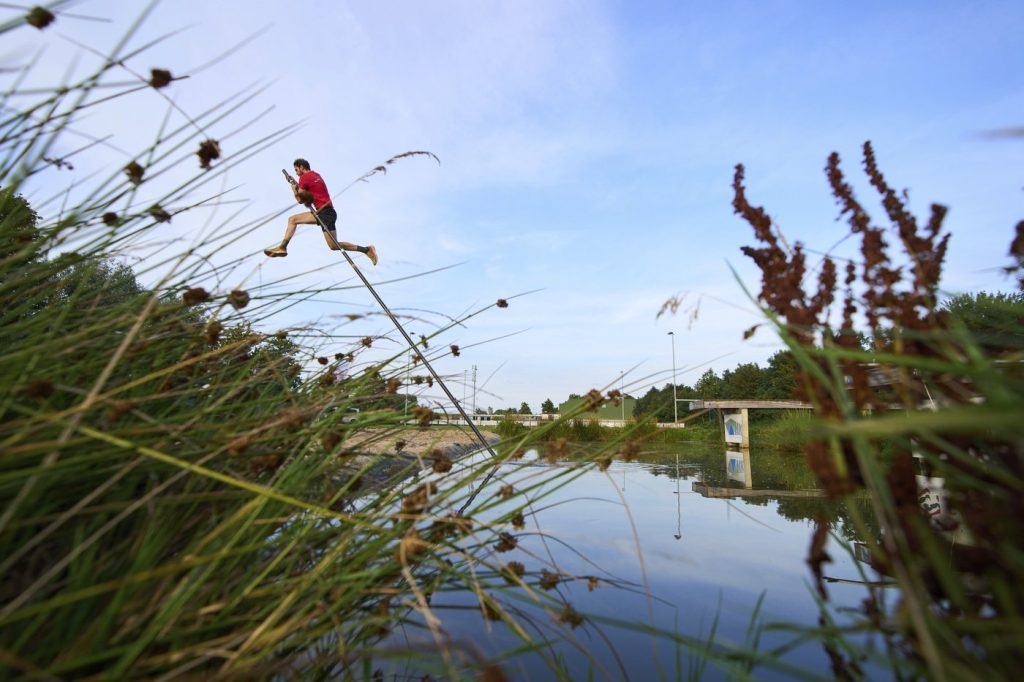KOCKENGEN, Netherlands (AP) – The Dutch sport of “fierljeppen,” or far leaping, captivates athletes and spectators alike with its unique combination of skill and thrill. Participants utilize slender carbon poles to hoist themselves over canals, culminating in either a graceful landing on sandy banks or a splashdown in the water below.
25-year-old athlete Bas van Leeuwen described the exhilarating moment of leaping from the pole: “The moment you are at the top of the pole and you get to jump (off) of the pole, in that small moment you get to fly and that’s just really nice to experience.” This week, van Leeuwen joined fellow jumpers for a competition near Utrecht, showcasing the sport’s distinctive appeal.
The mechanics of fierce jumping involve sprinting toward a carbon pole anchored by one end in a canal, angled toward the bank. Athletes dash along a jetty, gripping the pole, and quickly shin up before taking a leap toward a sandy landing spot opposite. Unlike traditional pole vaulting, which prioritizes height, fierce jumping focuses on the distance covered.
Despite the risks involved—losing momentum or miscalculating landing angles can result in an ungraceful plunge into the canal—athletes maintain that the sport is not particularly dangerous. “The sport is not really that dangerous. I think more people get injured during soccer,” van Leeuwen commented, reflecting on his personal recovery from an ankle ligament injury sustained while leaping. He added, “The most common (injury) is the ankles or the knees because when you land, that is a fragile part of the body. Sometimes it snaps.”
Historically, using poles to navigate the Netherlands’ intricate canal system represented a practical solution for farmers in remote areas. The competitive form of “fierljeppen” began to emerge in the 1950s and ’60s, according to Wim Roskam, a historian of the sport. Enhancements in technology now allow for increasingly monumental leaps, with the current record soaring to 22.21 meters (just over 24 yards).
Roskam emphasized the evolution of pole materials, stating, “The pole, first it was wood. Very heavy, can break. Then aluminum, less heavy but still a bit heavy, and now it’s carbon.” Although crowds at competitions may be modest, the enthusiasm among leapers and their supporters is palpable, particularly in Dutch villages, where fierce jumping boasts a dedicated following but remains relatively unknown in urban areas. Roskam remarked on the sense of community within the sport, saying, “We are kind of a family. We know each other, we trust each other. I can leave my phone here and it’s all right, no problem. We help each other, and when there are some sad things, we are there for each other too.”
As the competition unfolded in Kockengen, enthusiasm for “fierljeppen” was apparent among participants and fans alike, underlining the deep roots and continued evolution of this distinctive Dutch sport.










